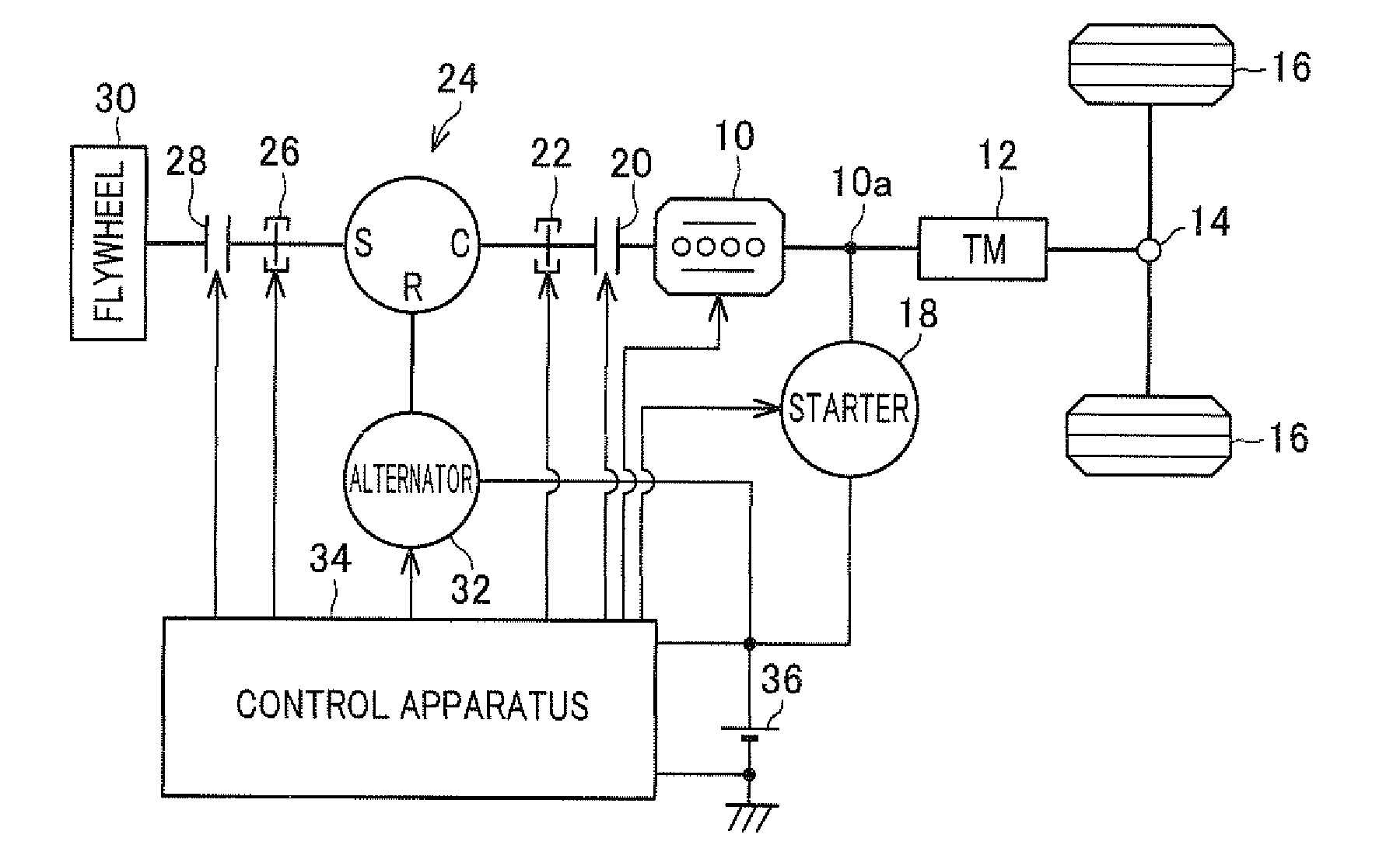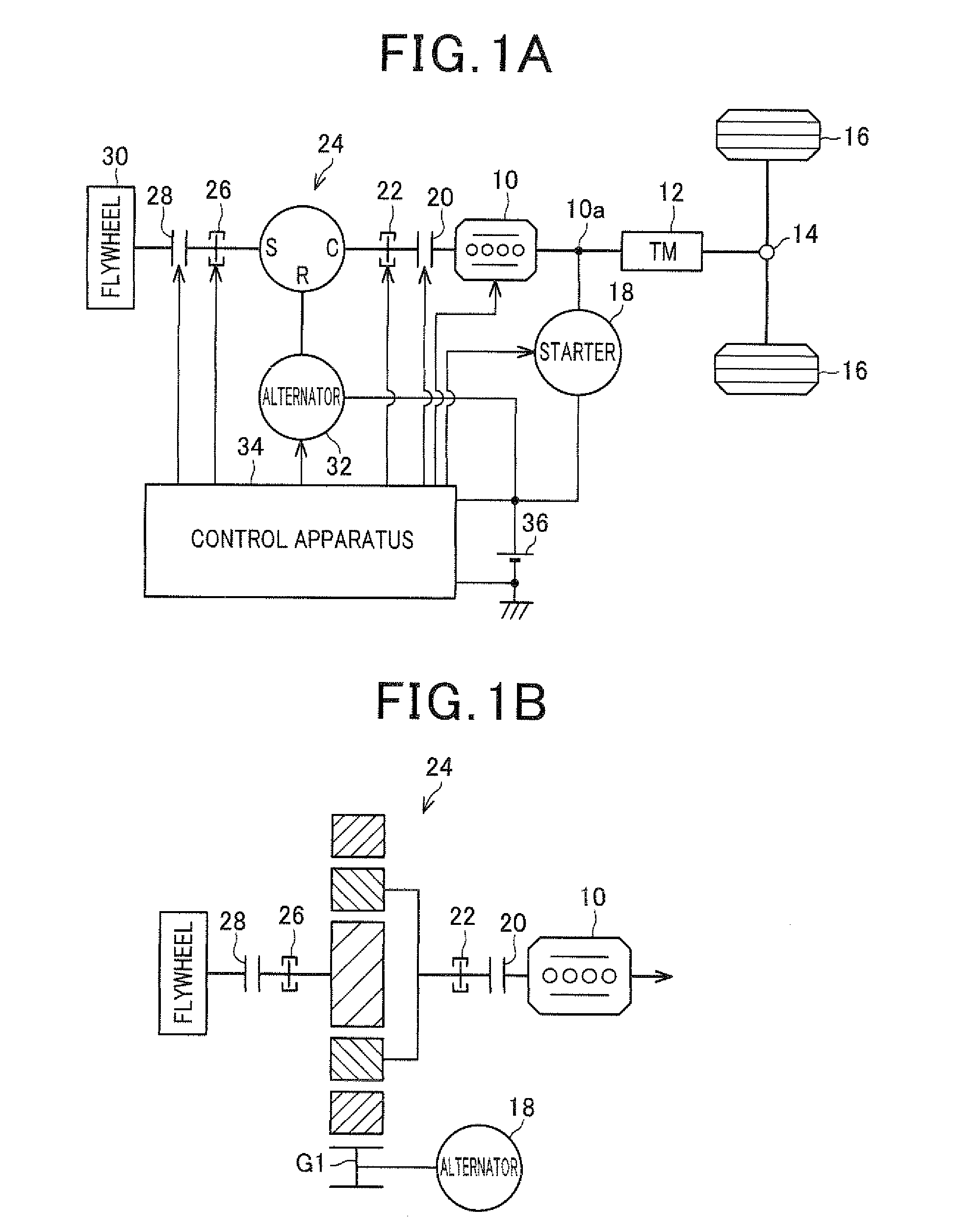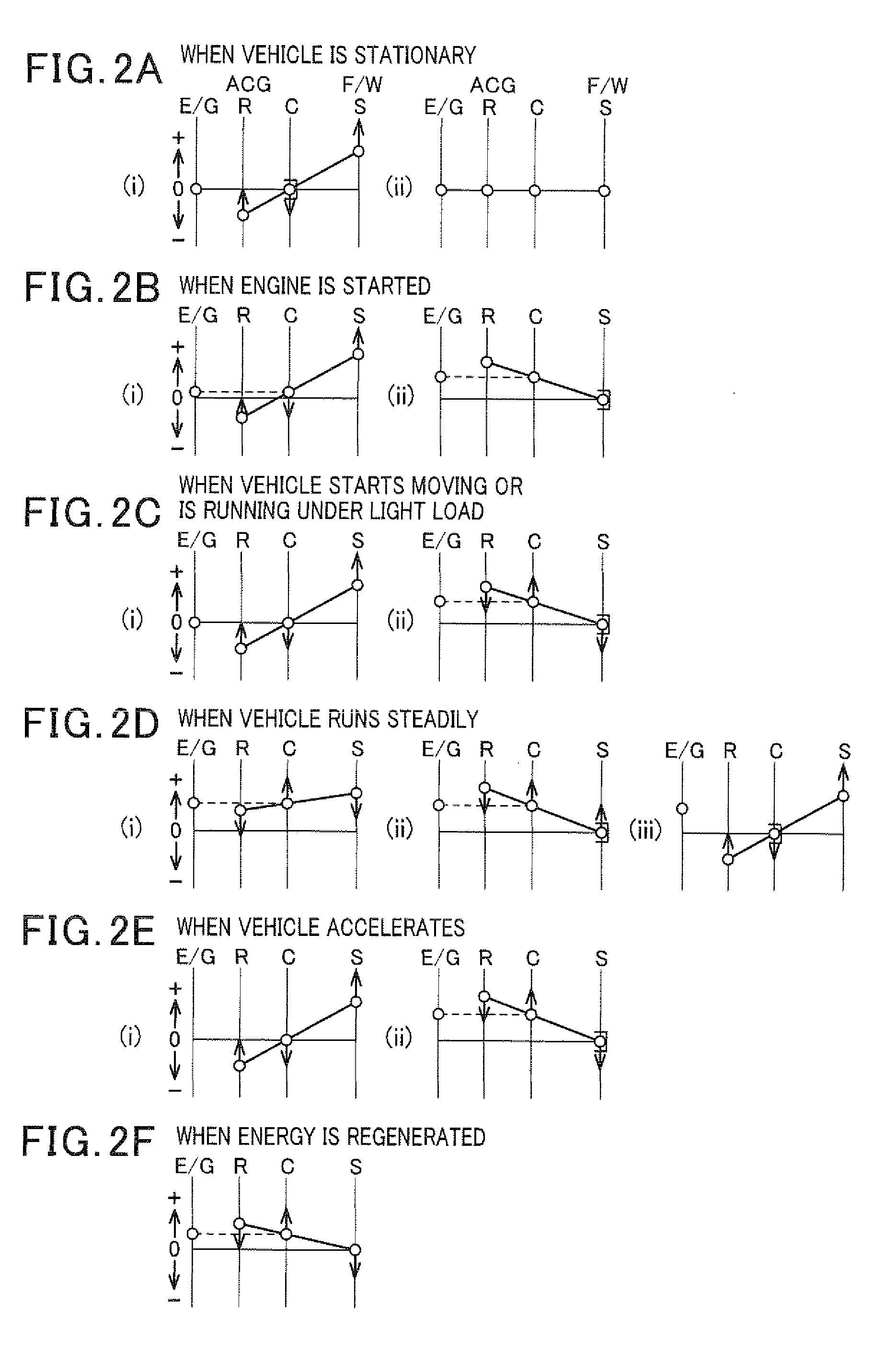Power transmission system for use in vehicle
a technology for power transmission systems and vehicles, applied in hybrid vehicles, gearing, instruments, etc., can solve problems such as the inability to charge vehicle-mounted batteries properly, and achieve the effect of effective use of regenerative energy
- Summary
- Abstract
- Description
- Claims
- Application Information
AI Technical Summary
Benefits of technology
Problems solved by technology
Method used
Image
Examples
first embodiment
[0031]FIG. 1A is a diagram showing the structure of a power transmission system for use in a vehicle according to a first embodiment of the invention.
[0032]The first embodiment describes an application of the present invention to a vehicle having an internal combustion engine 10 as a single main engine thereof. A crankshaft 10a of the engine 10 is mechanically coupled to drive wheels 16 through a transmission 12 and a differential 14. The crankshaft 10a is provided with a starter 18 as a means to provide initial rotation to the crankshaft 10a.
[0033]The crankshaft 10a is mechanically coupled to a power split device 24 through a clutch 20 and a locking device 24 at its end not coupled to the transmission 12. The power split device 24 includes a plurality of rotating bodies which rotate in conjunction with one another, and distribute power among the engine 10, the flywheel 30 and an alternator 32. In more detail, the power split device 24 is constituted of a single planetary gear devi...
second embodiment
[0064]Next, a second embodiment of the invention is described with particular emphasis on the difference with the first embodiment.
[0065]FIG. 3 is a diagram showing the structure of a power transmission system for use in a vehicle according to a second embodiment of the invention. In FIG. 3, the reference numerals identical to those in FIG. 1 represent the same elements.
[0066]As shown in FIG. 3, in this embodiment, the starter 18 is mechanically coupled to the ring gear R. When the engine 10 is started without using the rotational energy of the flywheel 30, this makes it possible to drive the starter 18 to provide an initial rotation to the engine 10 in a state where the sun gear S is locked by the locking device 26. The rotational speeds of the ring gear R and the carrier C are the same as those shown in the section (ii) of FIG. 2B.
[0067]The second embodiment provides the following advantage in addition to the advantages (1) to (6) provided by the first embodiment.
[0068](7) The sta...
third embodiment
[0069]Next, a third embodiment of the invention is described with particular emphasis on the difference with the first embodiment.
[0070]FIG. 4 is a diagram showing the structure of a power transmission system for use in a vehicle according to a third embodiment of the invention. In FIG. 4, the reference numerals identical to those in FIG. 1 represent the same elements.
[0071]As shown in FIG. 4, in this embodiment, between the power split device 24 and the flywheel 30, there is provided a step-up device 40 which increases the rotational speed of the power split device 24. The step-up device 40 is constituted of a planetary gear device whose carrier C is mechanically coupled to the power split device 24, whose sun gear S is mechanically coupled to the flywheel 30, and whose
ring gear R is locked.
[0072]The third embodiment provides the following advantage in addition to the advantages (1) to (6) provided by the first embodiment.
[0073](8) Between the ring gear R coupled to the flywheel 30...
PUM
 Login to View More
Login to View More Abstract
Description
Claims
Application Information
 Login to View More
Login to View More - R&D
- Intellectual Property
- Life Sciences
- Materials
- Tech Scout
- Unparalleled Data Quality
- Higher Quality Content
- 60% Fewer Hallucinations
Browse by: Latest US Patents, China's latest patents, Technical Efficacy Thesaurus, Application Domain, Technology Topic, Popular Technical Reports.
© 2025 PatSnap. All rights reserved.Legal|Privacy policy|Modern Slavery Act Transparency Statement|Sitemap|About US| Contact US: help@patsnap.com



